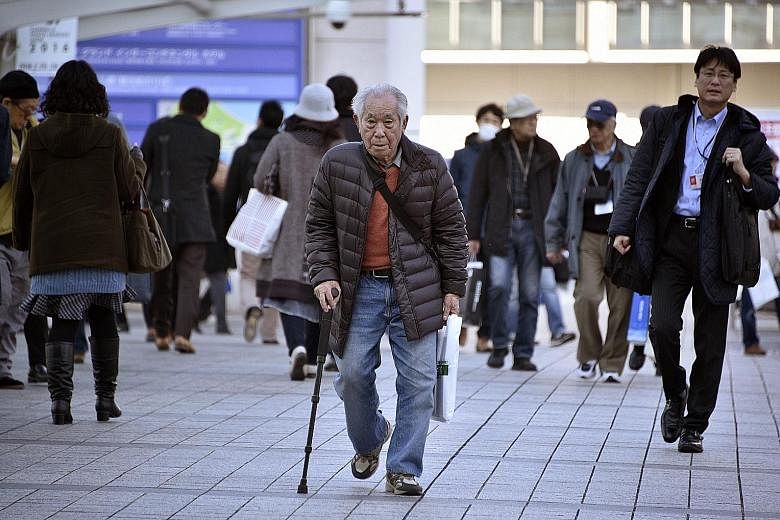TOKYO • Japan's population shrank by nearly a million over the past five years, official census figures confirmed, an unprecedented drop for a society not ravaged by war or other deadly crises.
It was the first time since Japan began collecting census data in 1920 that a nationwide count recorded a decline in the population, although surveys based on smaller samples have shown a downward trend for several years. The population stood at 127.1 million in 2015, the Ministry of Internal Affairs and Communications said on Friday, down by 947,000, or 0.7 per cent, compared with the last census in 2010.
A shrinking population creates ripples that are widely felt, from the economy to politics.
With one of the lowest birth rates in the world and little immigration, Japan has seen this inflection point coming for years, if not decades. Yet efforts by the government to encourage women to have more children have had little impact, and there is little public support for opening the doors to mass immigration.
"These numbers are like losing an entire prefecture," Mr Shigeru Ishiba, a Cabinet minister in charge of efforts to revitalise Japan's especially depopulated rural areas, said at a news conference.
A handful of Japan's 47 prefectures, administrative districts similar to provinces or states, have populations of less than one million.
Prime Minister Shinzo Abe responded to the census report by reiterating a long-term goal of keeping the population from falling below 100 million. Projections by the government and international bodies like the United Nations suggest that will be difficult, however.
The latest UN estimates suggest that Japan's population will fall to 83 million by the end of the century, down 40 per cent from its peak.
Mr Abe's goal depends on raising the birth rate to 1.8 children per woman, up from 1.4 now and higher than it has been since the early 1980s. Rates have, in fact, ticked up slightly compared with a decade ago. But with women marrying later - in part, demographers say, to avoid social pressure to give up their careers - a more decisive turnaround looks far off.
Japan will not necessarily suffer just because it is smaller. Many countries with fewer people are just as prosperous. Japan's economic output has been stagnant for years, but the picture looks less dire, economists say, once a shrinking workforce is taken into account.
The real problem, experts say, is less about size of the familiar "population pyramid" but its shape. Because the low birth rate means each generation is smaller than the last, it has flipped on its head, with a bulging cohort of older Japanese at the top supported by a narrow base of young people. One-quarter of Japanese are now older than 65, and that percentage is expected to reach 40 per cent by 2060. Pension and healthcare costs are growing even as the workers needed to pay for them become scarcer.
The population is also shrinking more in some places than others. the biggest cities, like Tokyo, are still growing, while rural areas struggle to cope with a plague of abandoned homes and shuttered shops. The imbalance has created political tensions: The most depopulated areas send three times as many representatives to Parliament, per capita, as urban ones do.
The Supreme Court has declared the situation unconstitutional, but Mr Abe's governing party - which has strong support in the countryside - has dragged its feet on redrawing electoral districts.
The government made several small adjustments last year, but Mr Abe said in Parliament on Friday that a more ambitious realignment would wait until the next census in 2020.
NEW YORK TIMES

